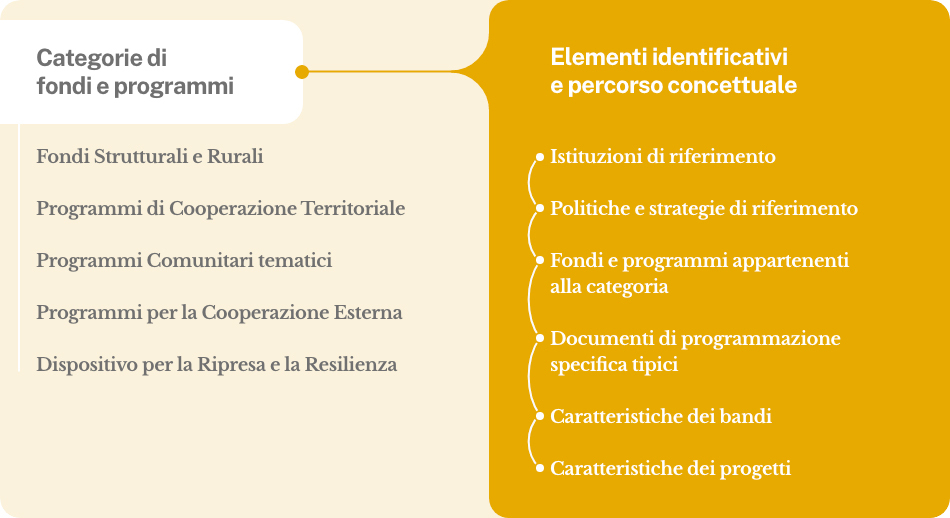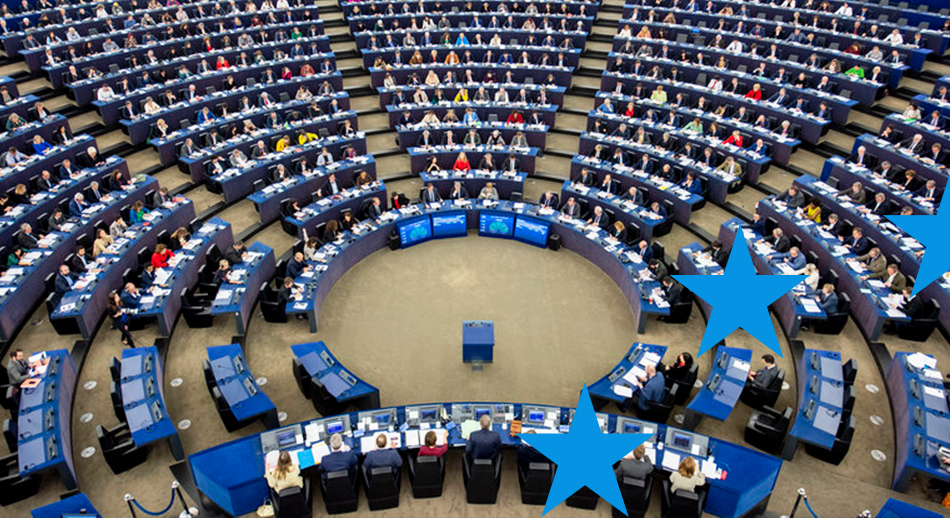Two new chapters in the Guide, delving deeper into a fundamental conceptual path for europlanning
The Guide: what it looks like, for those not familiar with it
Our Guide is organized in a simple way. It consists in part of periodic updates and insights, visible from our homepage , from a appropriate menu (located on the site in the upper right corner), through our newsletter and our social channels Facebook e LinkedIn .
It also consists of a more properly “ manuals ” (available on the site via the left-hand menu) that goes through all the steps needed to start or learn more about europrojecting. In this part:
- A first chapter outlines the fundamentals of europlanning and concludes with a summary overview of all funds and programs;
- A second chapter analyzes, one by one, the main categories of financing;
- A third chapter provides the conceptual tools for “getting to work.”
- Three chapters, devoted respectively to the community programs, to the structural funds (POR e PON) and to the programs of territorial cooperation, present short thematic fact sheets providing in-depth coverage of all programs implemented at the EU and local levels.
The Guide: a new fundamental “pillar”
This structure has just been enriched with a key “pillar.” The organization of the EU institutions, the founding treaties of the European Union and the evolution of EU policies have a very important impact on the activity of Europlanning. So far this has been addressed only in very general terms (in chapters 1.1. e 1.2. ), but it seemed appropriate to enrich the analysis with an in-depth treatment of the topic, which we present in the new chapters 1.3. (Europrogettazione, istituzioni e politiche europee) e 1.4. (Types of European funds and programs).
We thank very much, for the stimulus for this improvement and for the discussion on these issues, the director (Prof. Javier Schunk) and the students of the Master in International Cooperation of ISPI, who used “live” the tools offered by the Guide as part of their course in EU projects and funding.
This is an important change that may bring further improvements to the structure and training offerings of the Europlanning Guide.
EU projects and funding, institutions and policies
The first of the new chapters (1.3.) addresses the institutional and political foundations of europlanning activity, tracing its characteristics and main conceptual steps:
- what makes europlanning “special” and what the basis of the EU’s institutional set-up is;
- the path from EU treaties to EU projects (passing through policies and strategies, regulations, specific programming of individual funds and programs, and calls for proposals);
- Analysis of the relevant institutions (Parliament, Commission and Council) and how they function;
- How to find and keep up to date with EU policies and strategies;
- How it comes about, how it is structured, and why the community budget is important;
- what are the “intermediate steps” that lead from funds and programs to calls for proposals (Work Plans, ROPs, NOPs and RDPs, Multi-Year Indicative Programs, etc.);
- What is the difference between funds, programs and instruments.
A very important foundation for understanding europlanning, keeping informed and writing quality projects.
Types of European funds and programs
The second of the new chapters (1.4.) fleshes out what has been previously outlined, providing an initial categorization of community funds and programs and presenting the main identifying elements of each category of funds and programs:

This is a more nuanced characterization than the one presented in later sections of the Guide, to more clearly illustrate the specificities (in terms of policies and programming) of the External Cooperation Programs and the Recovery and Resilience Facility.
We hope these additions will help our readers to better frame the basics of Europrojecting-and the implications of this in actions, choices, strategies and thinking about European projects.
We remain available to clarify any doubts and welcome your feedback ( e-mail | FB | LIn ).




